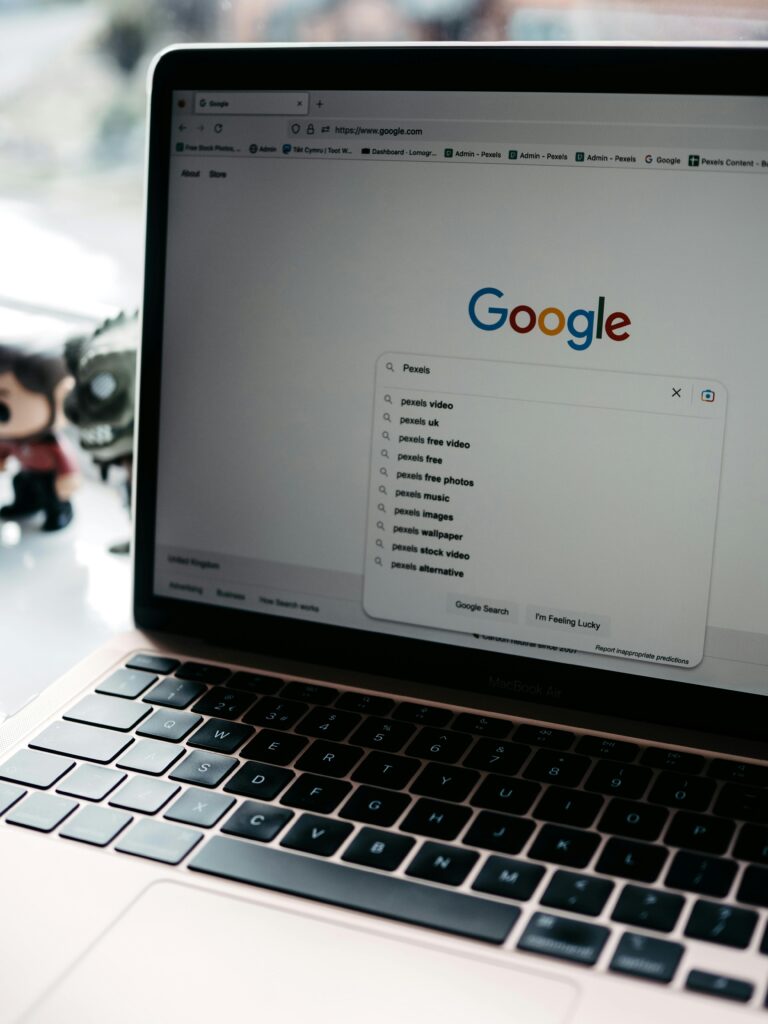How to Rank on Google in 2025
How to Rank on Google in 2025: What Actually Works It’s 2025 — and if you’re still hanging on to SEO strategies from five or six years ago, you might be scratching your head wondering how to rank on Google in 2025. The game has changed. A lot. Google’s algorithm is smarter, more intuitive, and far less tolerant of outdated shortcuts. But here’s the good news: SEO isn’t dead — it’s just evolved. In this guide, you’ll learn what genuinely works if you want to rank higher on Google in 2025 and, more importantly, stay there. Whether you’re a startup, an agency, or even a website design freelancer, these strategies apply across the board. 1. Create Helpful, People-First Content Let’s kick things off with Google’s core message (which it’s repeated loud and clear): “Focus on people-first content.” The days of stuffing pages with keywords and hoping for the best are long gone. Google’s Helpful Content System can now tell if your page is truly valuable — or just trying to game the algorithm. 👉 Want to know how to rank on Google in 2025? Start by being genuinely helpful. What to do:• Answer the real questions your audience is asking.• Share original insights, not just rewrites of what’s already out there.• Ditch the robotic tone — write like you’re talking to a real person.• Go deep on your topic; surface-level fluff won’t cut it. 2. Build Topical Authority, Not Just Keyword Lists Old-school SEO was all about hitting a certain keyword density. In 2025, it’s all about being the go-to source for a topic. Google now favors content that shows true expertise and a full understanding of the subject matter. If you’re wondering how to rank on Google in 2025, think big-picture — not just one blog post, but an ecosystem of related content. What to do:• Build content clusters (main guide + related blog posts).• Tackle different angles: how-tos, common mistakes, FAQs, and real-world examples.• Interlink everything strategically to show depth and authority. 3. Double Down on E-E-A-T (Experience, Expertise, Authority, Trust) This acronym might sound technical, but it’s one of the most human concepts in SEO. Google wants to promote content from people who actually know what they’re talking about — and can prove it. Understanding how to rank on Google in 2025 means putting your credibility front and center. What to do:• Add detailed author bios with real credentials.• Use case studies, testimonials, and firsthand experience.• Secure mentions or backlinks from reputable sources.• Keep your site clean, secure, and transparent. 4. Optimize for Google’s AI-Powered Search (SGE) Welcome to the age of Google’s Search Generative Experience (SGE) — where AI summaries show up before the organic results. That means users often get their answers without ever clicking through. So how do you rank on Google in 2025 when people don’t even visit your site? You get featured. What to do:• Answer user questions on the page in a clear, concise way.• Use schema markup so Google understands and showcases your content.• Add FAQs, bullet points, and headers for easy scanning.• Think “zero-click content” — provide instant value. 5. Your Website Must Be Fast and Mobile-Friendly No surprises here — Google still loves speed and clean mobile experiences. But in 2025, slow sites aren’t just a ranking issue — they’re a bounce magnet. If your site lags, your visitors will too. If you’re serious about how to rank on Google in 2025, you can’t ignore performance. What to do:• Optimize images with lazy loading and modern formats (like WebP).• Use clean, mobile-responsive templates.• Minify and compress everything.• Monitor your Core Web Vitals regularly in Google Search Console. 6. Strengthen Your Internal Linking Game Your website isn’t a bunch of isolated pages — it’s a living, breathing network. Internal links guide both users and Google through your site and help important pages rise in the ranks. This tactic is still incredibly underrated in how to rank on Google in 2025. What to do:• Link your blog posts to your key landing or service pages.• Use meaningful anchor text — no more “click here.”• Make sure every major page is reachable in 2-3 clicks from the homepage. 7. Keep Users Engaged — or Lose Them Google might not say it outright, but engagement metrics like dwell time and bounce rate matter. If people come to your page and leave immediately, Google takes notice. Want to learn how to rank on Google in 2025? Give users a reason to stick around. What to do:• Use videos, infographics, charts, or interactive elements.• Break up text so it’s easy to skim.• Add CTAs, polls, or embedded tools.• Start strong — those first few lines are make or break. 8. Invest in Video SEO Search results aren’t just blue links anymore. Videos are everywhere — especially for tutorials, reviews, and explainer content. If you’re not creating video, you’re missing out on a massive piece of the SEO pie. Video is a major part of how to rank on Google in 2025 — even if it’s just embedded on your blog. What to do:• Make short, useful videos and upload them to YouTube.• Use titles, descriptions, and tags that match your target keywords.• Add transcripts and captions for accessibility and SEO.• Implement video schema markup so search engines can “see” what your video is about. Final Thoughts: SEO in 2025 is Human-Centered The biggest shift in SEO isn’t technical — it’s philosophical. In 2025, how to rank on Google comes down to serving real people, not just search engines. Focus on content that actually helps. Build authority over time. Optimize for humans first and Google second. And stay adaptable — because the landscape is always shifting. If you’re ready to stop guessing and start ranking, reach out. Our team knows how to rank on Google in 2025 — and we can help you do it the right way.



